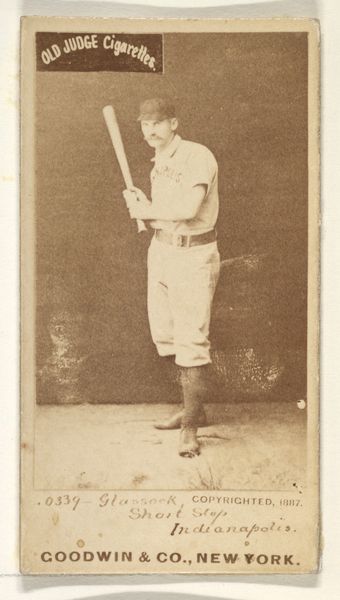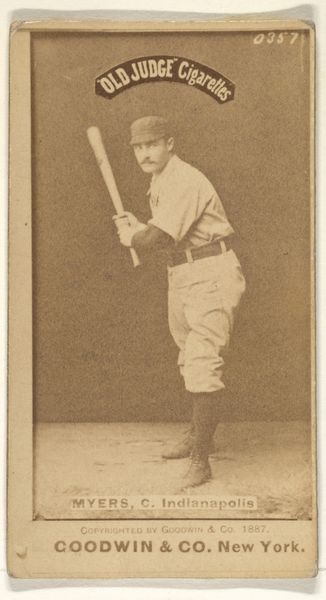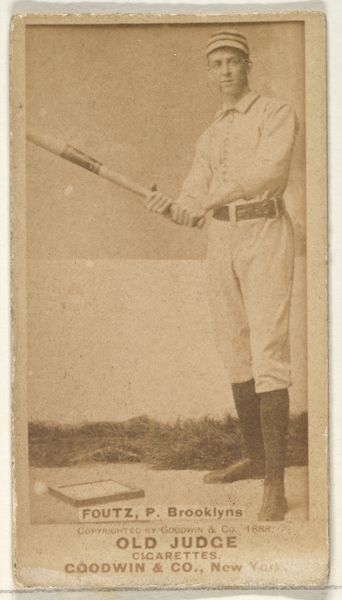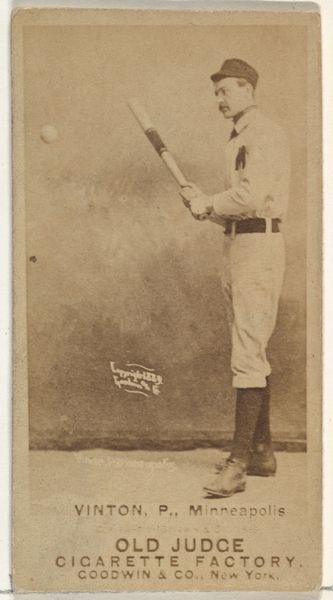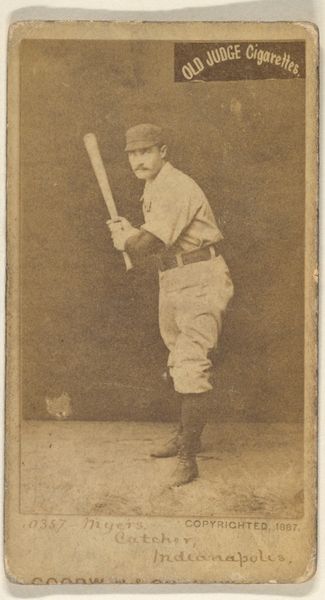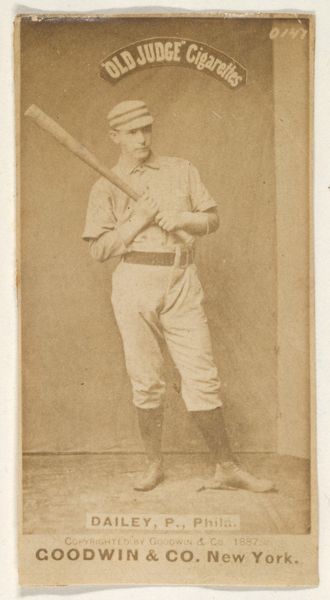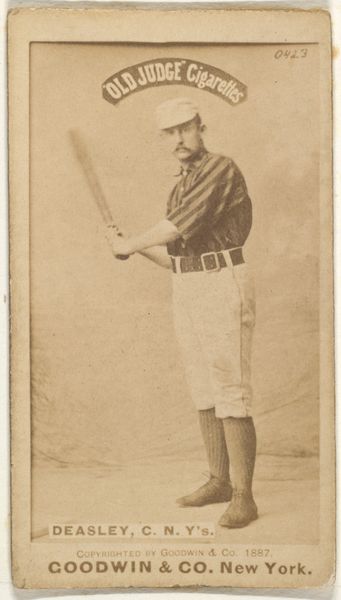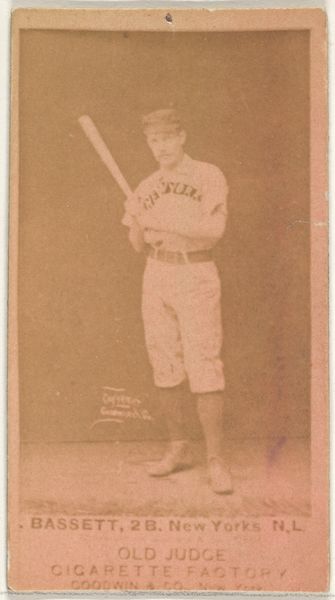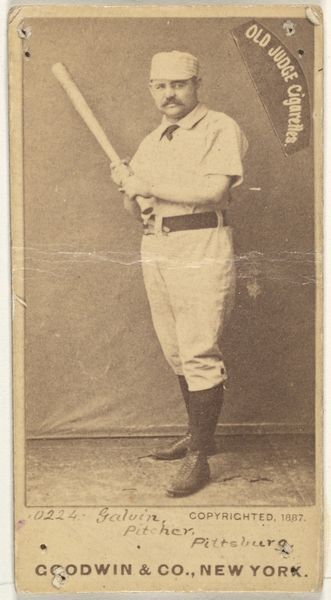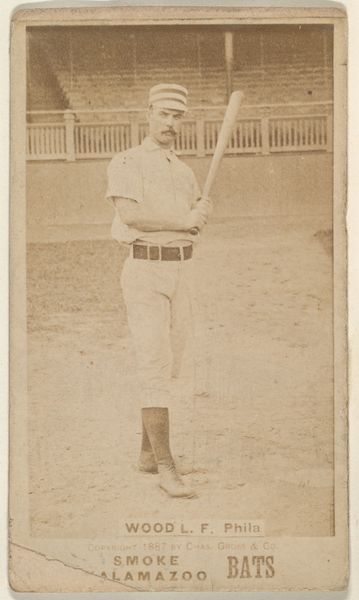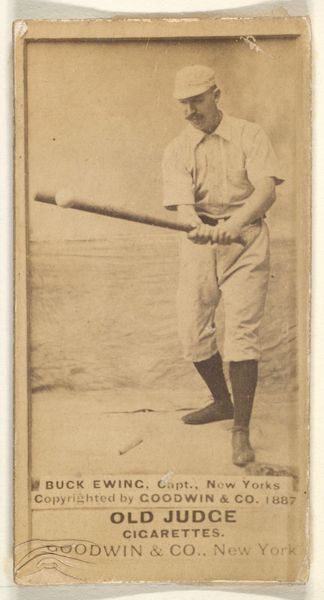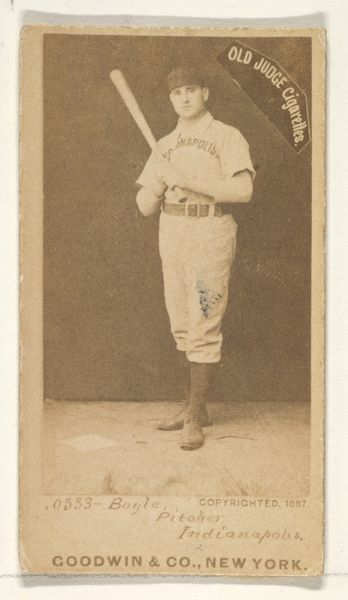
Glasscock, Shortstop, Indianapolis, from the Old Judge series (N172) for Old Judge Cigarettes 1887
0:00
0:00
Dimensions: sheet: 2 11/16 x 1 3/8 in. (6.9 x 3.5 cm)
Copyright: Public Domain
Editor: We’re looking at “Glasscock, Shortstop, Indianapolis,” a baseball card from 1887 by Goodwin & Company. It’s fascinating; the sepia tone gives it this timeless quality, but the rigid pose makes it feel very much of its era. What strikes you about the composition? Curator: Observe how the image operates within its rectangular frame. The figure of Glasscock is positioned almost centrally, his verticality echoed by the bat. The toned paper imparts a uniform tonality disrupted only by the typography at the top and bottom edges. Do you see how that functions? Editor: It kind of boxes him in, right? Makes it feel more contained, almost like he’s trapped in this moment. Curator: Precisely. Consider the semiotics of the pose itself. His grip on the bat is firm, yet his gaze is averted, creating a tension between readiness and reserve. How does the artist manipulate light and shadow to define form? Editor: It’s subtle, right? Not a ton of contrast. The shadows softly round out his figure but, the lack of stark contrast gives the figure a flatter, more graphic feel. It almost blurs together to create shape rather than depth. Curator: Yes, this contributes to the flattened picture plane characteristic of the photographic medium. It also diminishes spatial depth, causing us to focus instead on the surface of the photograph itself. Notice the textured background. Is it distracting? Editor: At first, maybe, but I think the textured backdrop against his uniform kind of amplifies the way that depth isn’t the focus here. Everything is so flat already, that the choice feels very intentional. Curator: Precisely. So, in understanding how all the different formal choices come together, what do you make of it now? Editor: Well, I initially thought it was a simple portrait, but looking at its components, I realize how the structure reinforces the stillness. I find this very intriguing, it brings up ideas about both performance and also representation. Curator: A fruitful observation, indeed. Analyzing these formal elements offers insights unavailable through historical contextualization alone.
Comments
No comments
Be the first to comment and join the conversation on the ultimate creative platform.
